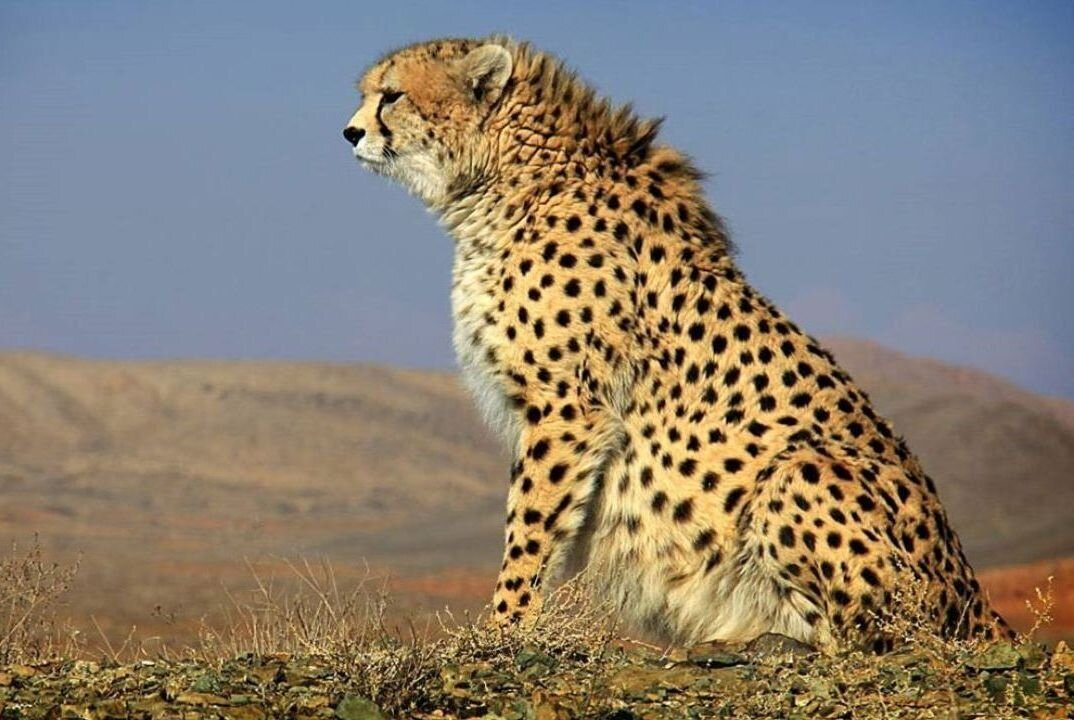16 cheetahs registered in Turan National Park

TEHRAN – A total of 16 cheetahs have so far been registered in Turan National Park in the northcentral Semnan province, an official with the Department of Environment (DOE) has said.
Growing the population of cheetahs in the wild is the top priority of the DOE, but their breeding in captivity is also scientifically monitored at the Turan National Park Research Center in the city of Shahrud, IRNA quoted Bahram-Ali Zahiri as saying.
Measures are being taken to preserve cheetahs from extinction by raising their population to 50, he added.
Cheetahs are polygamous mammals. Asiatic cheetahs reach maturity at 2 to 3 years of age and can reproduce until 8 years of age. Female Asiatic cheetahs give birth to multiple cubs, he explained.
A document on the growth and maintenance of Asiatic cheetahs as a valuable and endangered species has been compiled for the first time in Iran marking a valuable scientific achievement by local experts, Zahiri said.
The official went on to say that five cheetahs namely "Iran", "Firouz", "Turan", "Azar", and "Delbar" are residing in the breeding site located in Turan National Park in Shahrud, under favorable physical conditions.
Studying the physical conditions of these cheetahs from birth to old age has contributed to the development of the growth and maintenance document for Asiatic cheetahs.
According to experts, the best habitat for the Iranian cheetah is the 100,000-hectare area of Turan National Park in the east of Semnan province. However, the biological territory of this valuable species is reported to be 100 to 300 km beyond this national park necessitating measures to be taken to save their lives in the entire Turan region.
Threats to Asiatic cheetahs include the lack of speed control cameras, improper lighting, allowing the livestock to graze beyond the permitted hours, and the presence of herding dogs.
Public participation cuts road fatality to zero
More than 250 people have voluntarily participated in a program to save Asiatic cheetahs that are usually killed in road accidents in the northeast of the country.
The program started on March 18 just before the New Year holidays, ISNA quoted Ali-Akbar Qorbanlou, the director of the Turan National Park – a main habitat of Asiatic cheetah – as saying.
Each year, an average of 8 accidents in the Mayami-Abbasabad Road, Semnan Province, led to the killing of cheetahs, he said, noting, “Thank God, no accidents have happened this year so far.”
In July 2023, a two-year-old cheetah was killed on the Abbasabad-Mayami Road.
Also in March last year, another cheetah, pregnant with three cubs, was killed in an accident on the same road.
Since 2010, at least 10 cheetahs have been killed in car collisions on this 'killer' road.
Hassan Akbari, an official with the Department of Environment, said last year that some notable progress had been made to reduce wildlife mortality on this road.
Akbari told Press TV that speed enforcement cameras would be installed along the road to monitor drivers’ compliance with speed limits in the region.
Since 2010, World Cheetah Day has been celebrated annually on December 4 in different countries with the aim of raising public awareness about the menace of extinction the species faces.
Considering the fact that Iran is the last remaining habitat of the Asiatic cheetah, this species is of particular importance.
The Department of Environment has focused on breeding in captivity, and maintaining the cheetah population in the habitat.
Expanding Persian cheetah’s habitat
With the cooperation of the private sector, the DOE plans to expand the Persian cheetah habitat within the protected area of Turan, northcentral Semnan province.
The Department of Environment also plans to increase the number of prey and rangers in these areas, ISNA quoted Hassan Akbari, the DOE’s director for natural environment and biodiversity, as saying.
Also known as the Asiatic cheetah, the animal is an endangered species whose territory is currently limited to some parts of Iran and its number is dangerously low.
To protect this species in the habitat, several measures have been taken so far. As a result, the number of cheetahs has increased and some have also been observed in areas outside Turan's protected area.
Moreover, the DOE has placed priority on increasing the variety and number of prey in Turan and its marginal habitats. Deer, ram, sheep, and rabbits are among the main prey.
Increasing the number of rangers in the Turan protected area and other habitats around it to ensure the security of the cheetahs is the other measure taken by the DOE.
Educational programs provided to people in surrounding villages and other areas are among other steps taken to protect the Persian cheetah.
MT/MG
Leave a Comment